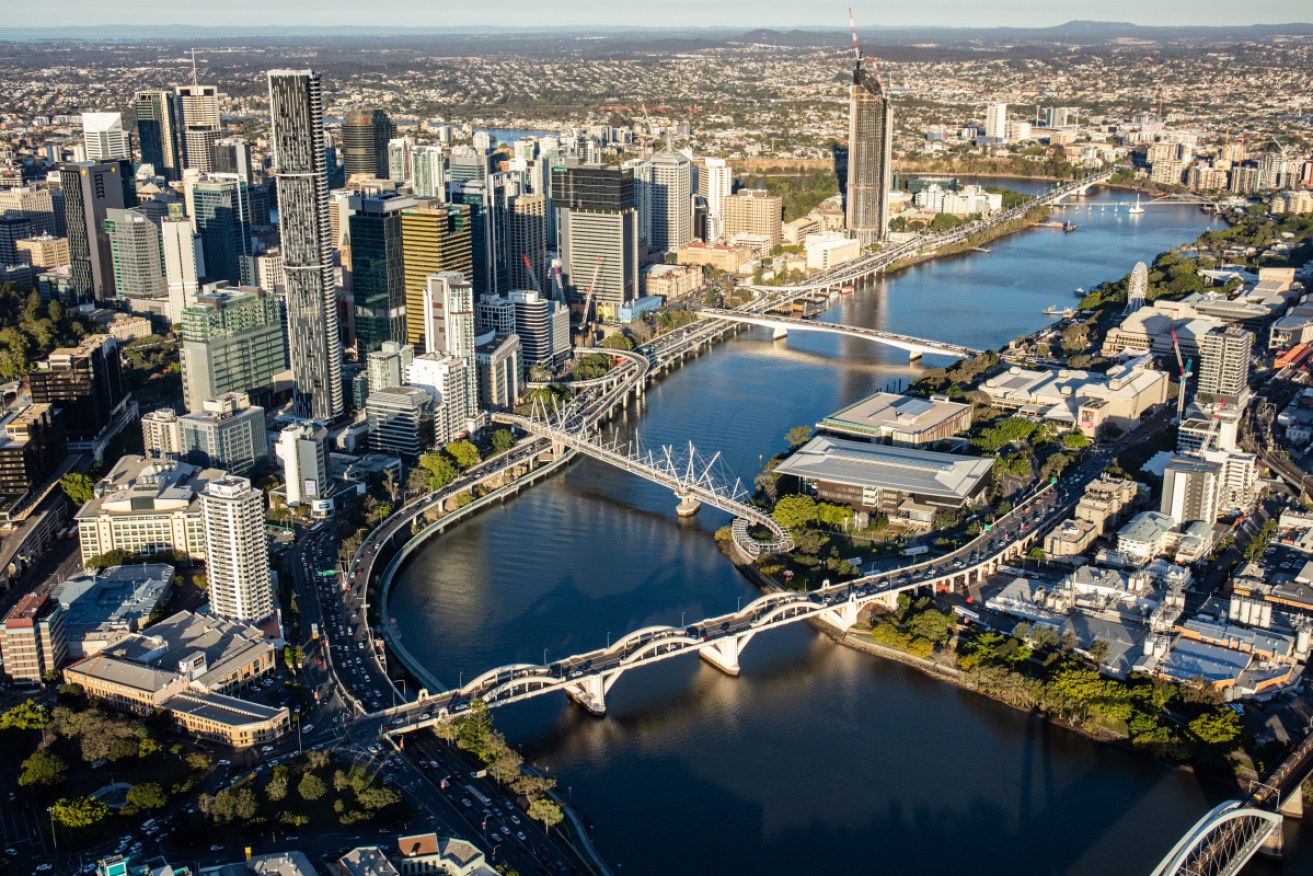Property recovery runs into speed bumps as affordability starts to bite


Brisbane saw its median home value rise 0.7 per cent in December. Photo: Getty
Property prices continued to rise in December – but greater choice for buyers and decreased affordability saw the market ease its foot off the accelerator.
CoreLogic’s final home value index of 2019 showed national property prices jumped 1.1 per cent in December and 4 per cent over the quarter.
That marked the fastest growth over any three-month period since November 2009, and meant prices finished the year 2.3 per cent higher than they started it.
Sydney and Melbourne were the standout performers, with prices in Australia’s two largest cities lifting 1.7 per cent and 1.4 per cent in December respectively – largely thanks to increased activity at the top end of the market.
Darwin was the only capital city where prices fell.
And the regional median rose half a per cent, too.
Overall, though, the recovery has started to lose some steam, with December’s national rise weaker than both November’s (1.7 per cent) and October’s (1.2 per cent).
CoreLogic head of research Tim Lawless attributed the slower pace to higher advertised stock levels and worsening affordability.
Supply had risen to meet demand, he said, while stagnant wages and soaring prices meant fewer and fewer people could now afford to buy a home.
Mr Lawless told The New Daily these trends were likely to continue.
“Throughout spring, listings were tracking very low. But coming into December, we started to see listing numbers getting roughly where they were a year ago, which was the first time we had seen listings on par with 12 months prior for more than a year,” Mr Lawless said.
“So, we did see more stock come onto the market in spring, and I think that probably is a trend that will continue into next year.”
Mr Lawless said more home owners would list their homes next year, as many had delayed their selling plans until prices had recovered.
“And another factor that will contribute to more stock coming onto the marketplace through 2020, particularly the first quarter, comes back to strong selling conditions,” he said.
“We ended the year with auction clearance rates still in the mid-70 per cent range. We were seeing homes taking a much shorter time to sell, and discounted rates were progressively reducing as well.”
Despite the strong pace of capital gains, national prices at the end of December remained 3.1 per cent below their record high, while Sydney and Melbourne finished the year 6.4 per cent and 2.3 per cent below their respective peaks.
According to CoreLogic, the only areas where prices are tracking at new record highs are Hobart, Canberra and regional Tasmania.
But if current growth rates are sustained, the national median will hit a new record high in March, while Sydney and Melbourne will surpass their 2017 peaks in April and February respectively.
After then, though, prices should rise much more modestly, according to Angie Zigomanis, director of research and strategy at Charter Keck Cramer.
Mr Zigomanis previously told The New Daily the recent house price rebound was largely the result of APRA’s “sugar hit”.
APRA’s easing of serviceability requirements increased people’s maximum borrowing capacity by roughly 13 per cent.
Consequently, the pace of capital gains should slow down substantially once prices have risen 13 per cent above their recent trough, as prices are rising so much faster than wages.
This means fewer and fewer people will have the money to buy a home the further we head into 2020, causing demand to fall.
Mr Lawless said investors would fill in part of the hole left by first-home buyers leaving the market. Not least because the average three-year fixed mortgage rate for investors has dropped below the gross rental yield across Australia’s capital cities for the first time since 2007.
But growing sales activity, stagnant wages, and a steady stream of apartment completions will outweigh the lift in investment activity, acting as speed bumps to future growth.
“What’s going to continue to drive [price] growth through 2020 is that we’re still seeing quite strong population growth,” Mr Lawless said, adding that slowing population growth in NSW and Victoria suggested prices in 2020 might rise faster elsewhere.
“Some of Australia’s smaller cities – which don’t have the same affordability challenges as Sydney and Melbourne, and are showing [strong jobs growth] and demographic trends that are rising rather than falling – could outperform Sydney and Melbourne,” he said.










